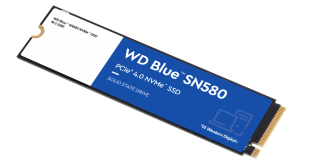Western Digital (WD) has announced plans to acquire SanDisk, in a deal it hopes will make it ‘an innovative leader in the storage industry’.
WD will acquire all of the outstanding shares of SanDisk for a combination of cash and stock. The offer values SanDisk common stock at $86.50 per share or a total equity value of approximately $19 billion.
The transaction is expected to close in Q3 2016.
WD said in a statement that it’s the "next step" in the transformation of WD into a storage solutions company with global scale, extensive product and technology assets, and deep expertise in non-volatile memory (NVM).
"With this transaction, Western Digital will double its addressable market and expand its participation in higher-growth segments. SanDisk brings a 27-year history of innovation and expertise in NVM, systems solutions and manufacturing. The combination also enables Western Digital to vertically integrate into NAND, securing long-term access to solid state technology at lower cost," said WD in a statement.
That’s the crux of the deal. This acquisition makes WD an instant specialist in the NAND flash memory sector and increase its presence within the SSD market, without having to take the time and resources to grow this by itself.
As the industry focuses more on cloud storage, this acquisition will bolster both firms going forwards.
SanDisk has made a number of product innovations this year, including portable SSDs, mobile SSDs and a partnership with HP to rival Intel/Micron’s 3D XPoint memory tech, which no doubt will have also caught the eye of WD.
"WD and SanDisk’s complementary product lines, including hard disk drives, solid-state drives, cloud datacenter storage solutions and flash storage solutions, will provide the foundation for a broader set of products and technologies from consumer to datacenter," WD added.
Analyst TrendForce said that this latest deal is a win-win for both sides.
"For WD, the rise of the SSD market has accelerated the development of related storage equipment. WD’s acquisition targets in the past three years were all developers of core technologies related to NAND Flash memory," TrendForce said in a statement.
"WD’s success in acquiring SanDisk is crucial to its plan to dominate the SSD market as this target is the lynchpin to its strategy."
"This transformational acquisition aligns with our long-term strategy to be an innovative leader in the storage industry by providing compelling, high-quality products with leading technology," said Steve Milligan, CEO at WD.
"The combined company will be ideally positioned to capture the growth opportunities created by the rapidly evolving storage industry. I’m excited to welcome the SanDisk team as we look to create additional value for all of our stakeholders, including our customers, shareholders and employees."
Steve Milligan will continue to serve as CEO of the combined company, and WD will remain headquartered in Irvine, California. Upon closing, Sanjay Mehrotra, president and CEO at SanDisk, is expected to join the WD Board of Directors.
For SanDisk, having the backing of WD will help it to grow and flourish in the years to come, expanding its reach globally and widening its product portfolio.
"Western Digital is globally recognized as a leading provider of storage solutions and has a 45-year legacy of developing and manufacturing cutting-edge solutions, making the company the ideal strategic partner for SanDisk," said Sanjay Mehrotra.
"Importantly, this combination also creates an even stronger partner for our customers. Joining forces with Western Digital will enable the combined company to offer the broadest portfolio of industry-leading, innovative storage solutions to customers across a wide range of markets and applications."
So what does this mean for SanDisk’s strategic partnership deal with Toshiba?
Well, the joint venture between the two will be ongoing – and is of benefit to WD. It provides stable NAND supply at scale and extends across NVM technologies such as 3D NAND. WD would not likely want to remove this.
Just this week, Toshiba and SanDisk announced the start of an equipment installation in the New Fab 2 facility at Yokkaichi Operations, designed to provide the clean room space necessary to transition a significant portion of the current Yokkaichi 2D NAND capacity to 3D flash memory. The companies also signed agreements for joint manufacturing of 3D flash memory and investment in New Fab 2.
Elsewhere, SanDisk has just announced its financial results for its third quarter ended September 27th 2015. Third quarter revenue of $1.45 billion decreased 17 per cent on a year-on-year basis.
SanDisk’s third quarter net income reached $133 million, compared to net income of $263 million in the third quarter of 2014.
In September, Chinese hardware manufacturer and vendor Unisplendour agreed to pay $3.78 billion for a 15 per cent stake in WD.
Earlier this month, Dell agreed to buy data storage company EMC for $67 billion (£44 billion) – the biggest deal in history between two tech companies.
 PCR Tech and IT retail, distribution and vendor news
PCR Tech and IT retail, distribution and vendor news




